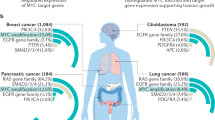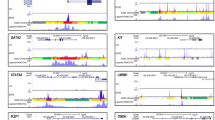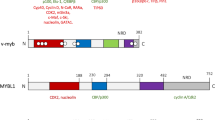Abstract
Many transcription factors have been found to be oncogenic either when functionally altered through fusion with other proteins or through deregulated expression. However, still little is understood about the mechanism by which these proteins can transform cells of different origin. The Myb transcription factor is emblematic in this respect. Several forms of Myb can transform hematopoietic cells of different lineages in the chicken and Myb has been shown to be required for murine fetal hematopoiesis and to regulate the growth and differentiation of hematopoietic cells of several animal species. The role of the transcriptional activity of Myb and its possible gene targets in transformation are critically discussed.
This is a preview of subscription content, access via your institution
Access options
Subscribe to this journal
Receive 12 print issues and online access
$259.00 per year
only $21.58 per issue
Buy this article
- Purchase on SpringerLink
- Instant access to full article PDF
Prices may be subject to local taxes which are calculated during checkout
Similar content being viewed by others
Author information
Authors and Affiliations
Rights and permissions
About this article
Cite this article
Introna, M., Golay, J. How can oncogenic transcription factors cause cancer: a critical review of the myb story. Leukemia 13, 1301–1306 (1999). https://doi.org/10.1038/sj.leu.2401492
Received:
Accepted:
Published:
Issue date:
DOI: https://doi.org/10.1038/sj.leu.2401492
Keywords
This article is cited by
-
The up-regulation of Myb may help mediate EGCG inhibition effect on mouse lung adenocarcinoma
Human Genomics (2016)
-
The pan-cancer pathological regulatory landscape
Scientific Reports (2016)
-
Systematic identification of transcription factors associated with patient survival in cancers
BMC Genomics (2009)
-
MYB function in normal and cancer cells
Nature Reviews Cancer (2008)
-
High expression of EDAG and its significance in AML
Leukemia (2005)



